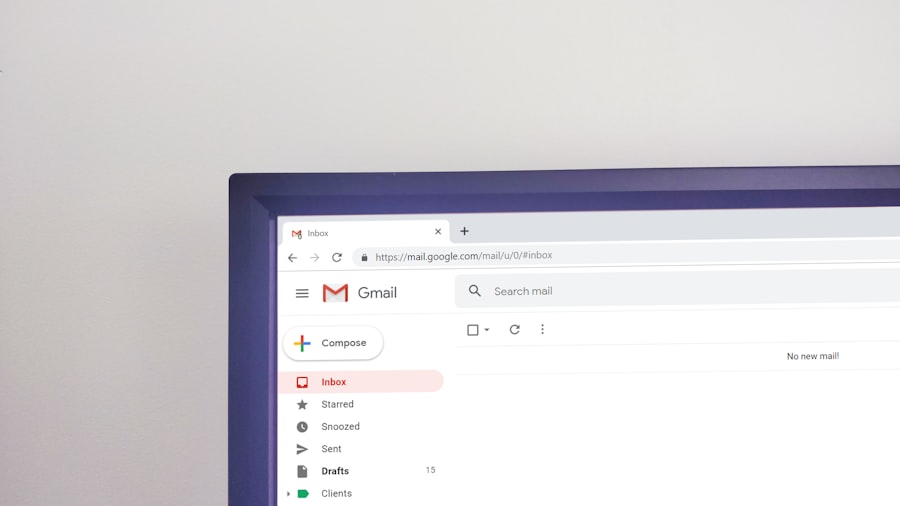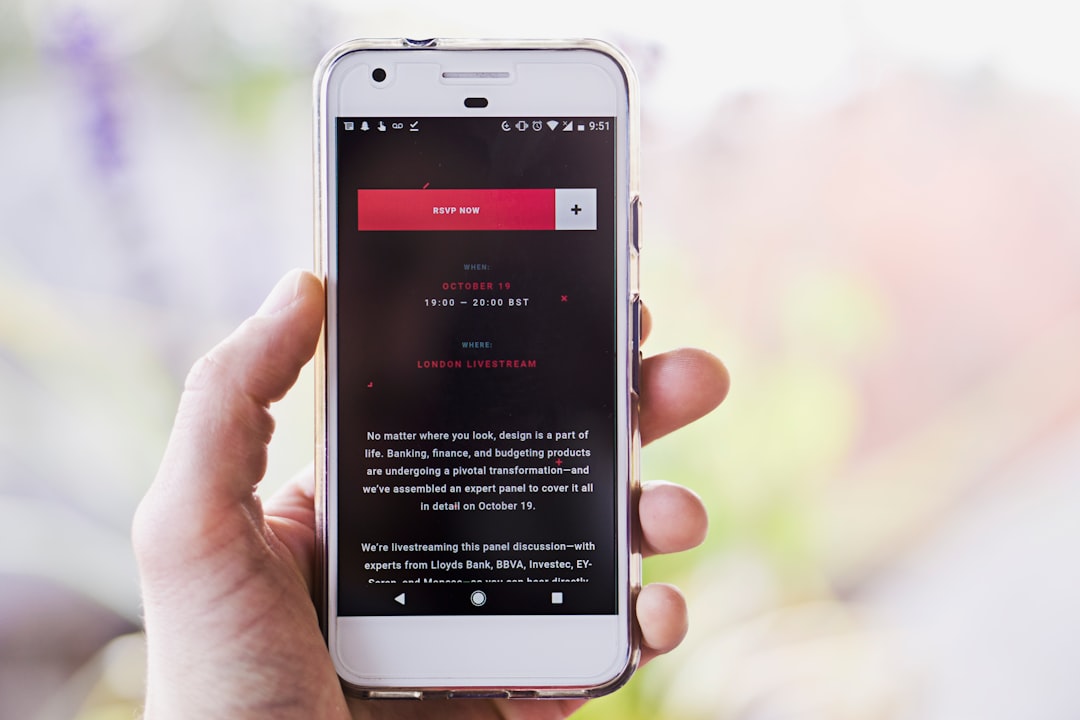Email marketing remains one of the most effective digital marketing strategies, particularly for businesses looking to engage with their audience directly. On platforms like Wix, understanding the concept of Send Rank is crucial for optimizing email campaigns. Send Rank is a metric that reflects the reputation of your email sending practices.
It is influenced by various factors, including the quality of your email list, engagement rates, and adherence to best practices in email marketing. A higher Send Rank indicates that your emails are more likely to reach the inboxes of your subscribers rather than being filtered into spam folders. Wix provides tools that help users monitor their Send Rank, allowing marketers to make informed decisions about their email strategies.
For instance, if a business notices a decline in its Send Rank, it may need to reassess its email content, frequency of sending, or the quality of its subscriber list. By maintaining a good Send Rank, businesses can ensure that their messages are delivered effectively, thereby maximizing engagement and conversion rates. Understanding this metric is essential for any marketer aiming to leverage email as a powerful communication tool.
Key Takeaways
- Understanding Email Marketing Send Rank on Wix:
- Wix’s Send Rank determines the sender reputation and deliverability of your emails.
- Factors that affect Send Rank include engagement, spam complaints, and bounce rates.
- Crafting Engaging and Relevant Email Content:
- Personalized and relevant content leads to higher engagement and conversion rates.
- Use compelling visuals and clear call-to-actions to capture the reader’s attention.
- Optimizing Email Subject Lines for Higher Open Rates:
- Keep subject lines concise and attention-grabbing to increase open rates.
- A/B test different subject lines to determine the most effective ones.
- Utilizing Personalization and Segmentation Techniques:
- Segment your email list based on demographics, behavior, and preferences for targeted messaging.
- Personalize emails with the recipient’s name and tailored content for better engagement.
- Implementing A/B Testing for Email Campaigns:
- Test different elements such as subject lines, content, and visuals to optimize email performance.
- Use A/B testing to make data-driven decisions and improve campaign effectiveness.
Crafting Engaging and Relevant Email Content
Creating engaging and relevant email content is at the heart of successful email marketing. The content must resonate with the audience’s interests and needs, which requires a deep understanding of the target demographic. This involves not only knowing what products or services they are interested in but also understanding their pain points and aspirations.
For example, a fitness brand might send out emails featuring workout tips, healthy recipes, and motivational success stories that align with their audience’s lifestyle goals. This relevance fosters a connection between the brand and its subscribers, encouraging them to open future emails and engage with the content. Moreover, the structure and design of the email play a significant role in how content is perceived.
A well-organized layout with visually appealing elements can enhance readability and engagement. Incorporating images, bullet points, and clear calls-to-action (CTAs) can guide readers through the email seamlessly. For instance, an e-commerce store might include high-quality images of new products alongside customer testimonials to create a compelling narrative that encourages purchases.
By focusing on both the substance and presentation of email content, marketers can significantly improve their chances of capturing and retaining subscriber interest.
Optimizing Email Subject Lines for Higher Open Rates

The subject line is arguably one of the most critical components of an email, as it serves as the first impression for recipients. An optimized subject line can significantly increase open rates, making it essential for marketers to invest time in crafting compelling phrases. Effective subject lines often evoke curiosity or urgency, prompting recipients to click through to read more.
For example, using phrases like “Limited Time Offer” or “Unlock Exclusive Content” can create a sense of urgency that encourages immediate action. Additionally, personalization can enhance subject line effectiveness. Including the recipient’s name or referencing their previous interactions with the brand can make the email feel more tailored and relevant.
For instance, a travel agency might send an email with the subject line “John, Your Next Adventure Awaits!” This personal touch not only grabs attention but also fosters a sense of connection between the brand and the subscriber. Testing different subject lines through A/B testing can provide valuable insights into what resonates best with your audience, allowing for continuous improvement in open rates.
Utilizing Personalization and Segmentation Techniques
| Technique | Benefits | Challenges |
|---|---|---|
| Personalization | Improved customer engagement, higher conversion rates | Data privacy concerns, resource-intensive |
| Segmentation | Targeted marketing, better customer satisfaction | Complexity in defining segments, potential for oversimplification |
Personalization and segmentation are powerful techniques that can transform generic email campaigns into targeted communications that resonate with specific audience segments. Personalization goes beyond simply addressing recipients by their names; it involves tailoring content based on individual preferences, behaviors, and past interactions with the brand. For instance, an online bookstore could send personalized recommendations based on previous purchases or browsing history, making the emails feel more relevant and engaging.
Segmentation involves dividing your email list into smaller groups based on shared characteristics such as demographics, purchase history, or engagement levels. This allows marketers to send more targeted messages that cater to the specific interests of each segment. For example, a clothing retailer might segment its list into categories like “Men’s Fashion,” “Women’s Fashion,” and “Kids’ Clothing,” ensuring that each group receives content that aligns with their interests.
By employing these techniques, businesses can enhance customer satisfaction and loyalty while improving overall campaign performance.
Implementing A/B Testing for Email Campaigns
A/B testing is a critical strategy in email marketing that allows marketers to compare two versions of an email to determine which one performs better. This method involves changing one element at a time—such as the subject line, call-to-action button color, or even the layout—and sending each version to a small segment of your audience. By analyzing metrics such as open rates, click-through rates, and conversion rates, marketers can gain insights into what resonates most with their subscribers.
For example, if a company is unsure whether to use a playful subject line or a straightforward one for an upcoming promotion, it can create two versions of the email and send them to different segments of its audience. The results will reveal which approach garnered more engagement, allowing for data-driven decisions in future campaigns. A/B testing not only helps optimize individual emails but also contributes to a broader understanding of audience preferences over time, enabling marketers to refine their strategies continuously.
Cleaning and Managing Email Lists for Better Deliverability

Maintaining a clean and well-managed email list is essential for ensuring high deliverability rates and maximizing engagement. Over time, subscriber lists can accumulate inactive or invalid email addresses due to various reasons such as users changing their emails or opting out of communications. Regularly cleaning your email list helps remove these inactive subscribers, which can improve your Send Rank and overall deliverability.
One effective strategy for managing email lists is implementing a re-engagement campaign targeting inactive subscribers. This could involve sending a special offer or survey to gauge their interest in remaining on the list. If they do not respond or engage after several attempts, it may be best to remove them from your list altogether.
Additionally, using double opt-in methods during sign-up can help ensure that only genuinely interested subscribers are added to your list from the outset. By prioritizing list hygiene, businesses can enhance their email marketing effectiveness and maintain strong relationships with engaged subscribers.
Leveraging Automation and Scheduled Sending
Automation in email marketing allows businesses to streamline their communication processes while ensuring timely delivery of relevant content. Automated emails can be triggered by specific actions taken by subscribers—such as signing up for a newsletter or making a purchase—enabling marketers to send personalized messages without manual intervention. For instance, an e-commerce site might set up an automated welcome series for new subscribers that introduces them to the brand’s offerings and encourages them to make their first purchase.
Scheduled sending is another powerful feature that allows marketers to plan their campaigns in advance and send emails at optimal times based on audience behavior patterns. Analyzing data on when subscribers are most likely to open emails can inform scheduling decisions. For example, if analytics show that engagement peaks on weekends for a particular audience segment, scheduling emails to arrive on Saturday mornings could lead to higher open rates and conversions.
By leveraging automation and scheduled sending effectively, businesses can enhance their efficiency while delivering timely and relevant content to their subscribers.
Analyzing Email Marketing Metrics and Making Data-Driven Decisions
The success of any email marketing campaign hinges on the ability to analyze metrics effectively and make informed decisions based on data insights. Key performance indicators (KPIs) such as open rates, click-through rates (CTR), conversion rates, and unsubscribe rates provide valuable information about how well an email campaign is performing. For instance, if an email has a high open rate but low CTR, it may indicate that while the subject line was compelling enough to entice recipients to open it, the content or call-to-action was not engaging enough to prompt further action.
Moreover, segmenting metrics by different demographics or behaviors can yield deeper insights into audience preferences and trends over time. For example, analyzing how different age groups respond to various types of content can help tailor future campaigns more effectively. By continuously monitoring these metrics and adjusting strategies accordingly—whether it’s refining content based on engagement patterns or optimizing send times—marketers can create more effective campaigns that resonate with their audience while driving better results for their business objectives.















